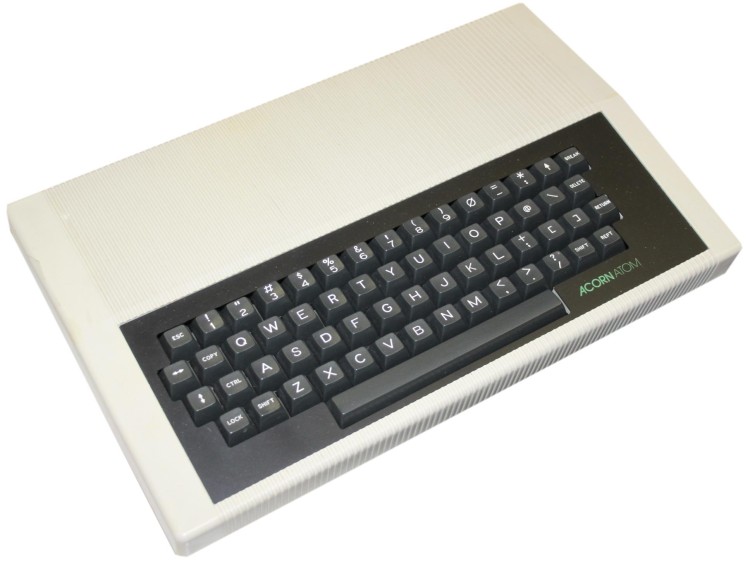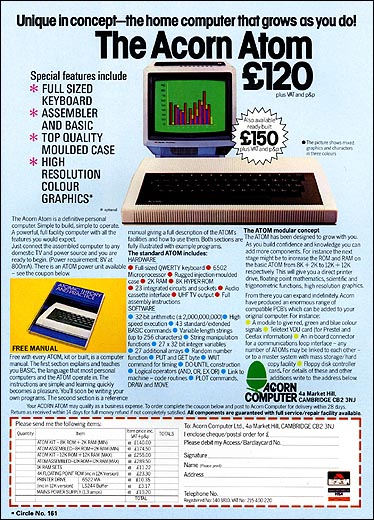
The Acorn Atom was the first home computer from Acorn Computers Ltd. Released in 1980, this 6502-based system featured 2K RAM and 8K ROM and cost £120 as a kit or £170 ready-assembled. It could be expanded up to 12K RAM for additional program storage along with a replacement 12K ROM that supported floating-point arithmetic.
Hi-res
The display supported six video modes, with resolutions from 64×64 in 4 colours, up to 256×192 in monochrome. However, many resolutions were only supported with the additional 12K RAM upgrade.
Speed
The Atom’s BASIC interpreter was fast but had its own unique style which was documented in the associated “Atomic Theory And Practice” manual. For example, many keywords could be abbreviated (“P.” for PRINT, “L.” for LIST). Unlike other BASIC interpreters of the time, the Atom included a built-in 6502 assembler which allowed assembler code to be written and called within the BASIC program:
10 DIM P(-1)
20 W=#FFF4
30[
40 LDA #80
50 JSR W
60 RTS
70]
80 ENDIt’s Good To Talk

The Atom boasted a number of expansion ports including a Centronics printer port. Acorn had also developed its own networking protocol called Econet. This allowed Atoms (and later computers such as the BBC Micro and Acorn Archimedes) to be networked together in a classroom or small office. It was later supported by other operating systems including CP/M, Unix and Microsft Windows.
The Acorn Atom was discontinued in 1983 when it was replaced by the more expensive BBC Micro and eventually the Acorn Electron. However, it offered the first experience of assembly language to many who would go on to create memorable games for the BBC Micro and Electron.